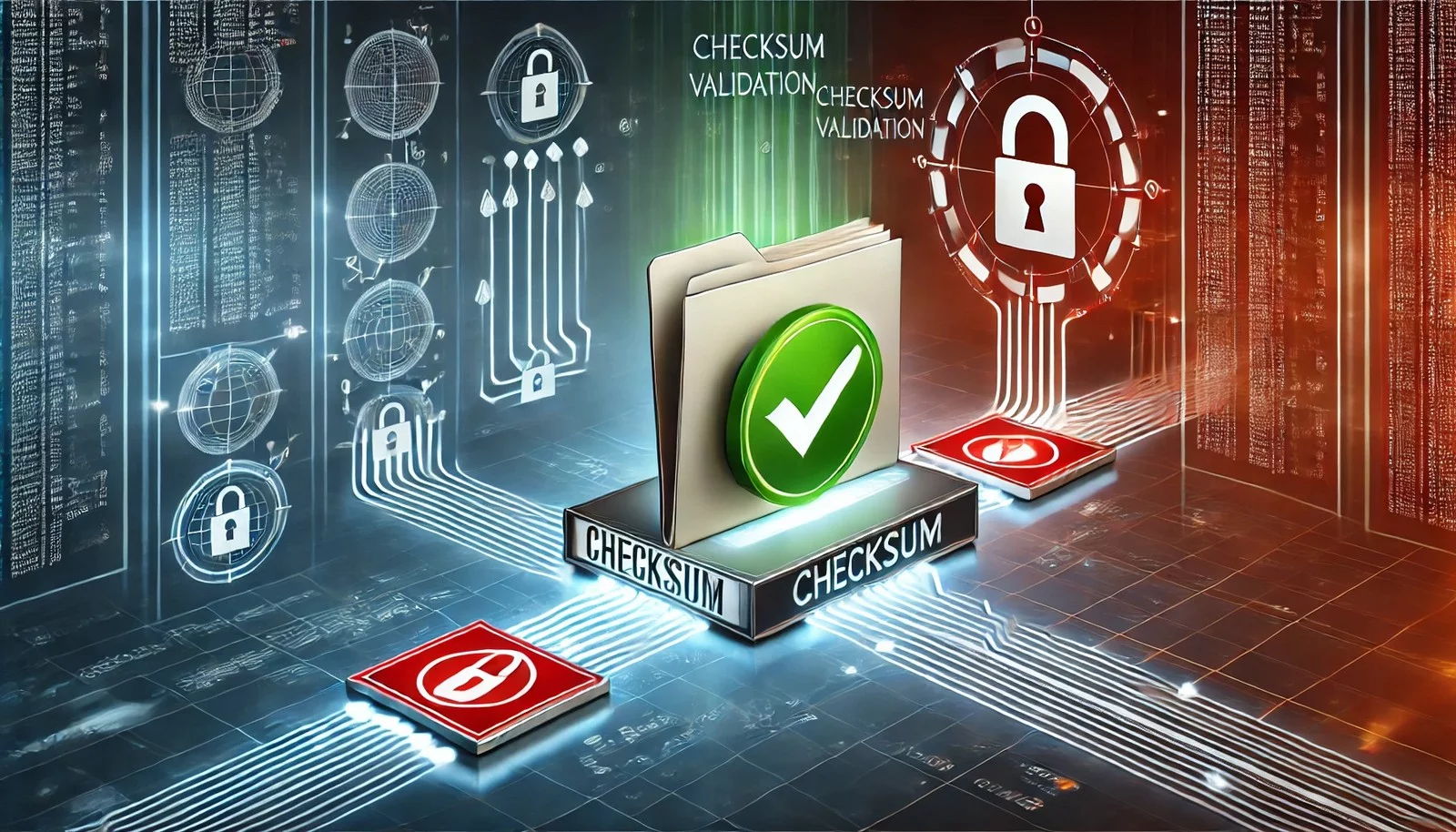Checksum Validation
 (Representational Image | Source: Dall-E)
(Representational Image | Source: Dall-E) ![]()
Quick Navigation:
- Checksum Validation Definition
- Checksum Validation Explained Easy
- Checksum Validation Origin
- Checksum Validation Etymology
- Checksum Validation Usage Trends
- Checksum Validation Usage
- Checksum Validation Examples in Context
- Checksum Validation FAQ
- Checksum Validation Related Words
Checksum Validation Definition
Checksum validation is a process used to verify the integrity of data by generating a unique fixed-length hash (checksum) for a file or message and comparing it against a previously calculated value. If the checksums match, the data is intact; if they differ, the data has been altered, either due to transmission errors or malicious tampering. Checksums are widely used in file transfers, software downloads, and data storage to prevent corruption and ensure reliability. Common checksum algorithms include MD5, SHA-1, and SHA-256, each offering different levels of security and reliability.
Checksum Validation Explained Easy
Imagine writing a letter and putting a special code at the bottom. When your friend gets it, they check the code. If it matches what they expected, they know your letter wasn’t changed. If it doesn’t match, something went wrong. Checksum validation works the same way for files and messages—it helps make sure nothing was changed along the way!
Checksum Validation Origin
The concept of checksum validation emerged with early computer systems and networking in the 1960s. As data transmission became more common, engineers needed a way to detect errors in transferred information. The introduction of hashing algorithms like CRC (Cyclic Redundancy Check) in the 1970s and cryptographic hash functions like MD5 in the 1990s further improved checksum validation for security and reliability.
Checksum Validation Etymology
The term “checksum” combines “check,” meaning verification, and “sum,” referring to the numerical value computed from the data. “Validation” derives from the Latin “validare,” meaning “to make strong or confirm.”
Checksum Validation Usage Trends
Checksum validation has been increasingly adopted in cybersecurity, cloud computing, and blockchain technologies. As digital data integrity becomes crucial, industries such as finance, healthcare, and software development rely on checksum validation to verify downloads, detect corruption in backups, and secure digital transactions. Modern implementations favor advanced cryptographic hash functions like SHA-256 due to vulnerabilities found in older algorithms like MD5 and SHA-1.
Checksum Validation Usage
- Formal/Technical Tagging:
- Data Integrity
- Cryptographic Security
- Network Communication - Typical Collocations:
- "checksum verification process"
- "file integrity checksum"
- "validate checksum before installation"
- "MD5 checksum comparison"
Checksum Validation Examples in Context
- When downloading software from a website, users are often given an SHA-256 checksum to verify the integrity of the file.
- In blockchain transactions, cryptographic checksums ensure data integrity and prevent unauthorized modifications.
- Cloud storage providers use checksum validation to detect file corruption during uploads and downloads.
Checksum Validation FAQ
- What is checksum validation?
It is a method used to verify data integrity by comparing a computed checksum with an expected value. - How does checksum validation work?
A checksum is generated for a file using an algorithm; if it matches the expected checksum, the file is intact. - Which checksum algorithms are commonly used?
MD5, SHA-1, and SHA-256 are among the most widely used checksum algorithms. - Why is checksum validation important?
It helps detect file corruption, transmission errors, and unauthorized modifications. - Can checksum validation be used for security purposes?
Yes, cryptographic hashes like SHA-256 help secure software downloads and blockchain transactions. - Is checksum validation always reliable?
While effective, some algorithms like MD5 are vulnerable to collisions, making them unsuitable for security-sensitive applications. - How do I validate a checksum?
Use a checksum utility or command-line tool to generate and compare the checksum of a file. - What happens if the checksum does not match?
It indicates possible data corruption, transmission errors, or tampering. The file should be re-downloaded or reverified. - Can checksum validation be automated?
Yes, many software applications and network systems automate checksum validation to ensure data integrity. - Is checksum validation used in everyday applications?
Yes, it is used in software updates, digital signatures, and cloud storage verification.
Checksum Validation Related Words
- Categories/Topics:
- Data Verification
- Cryptographic Security
- File Integrity
Did you know?
In 2004, researchers discovered that the MD5 hashing algorithm was vulnerable to collisions, meaning two different files could generate the same checksum. This led to widespread security concerns, and organizations gradually shifted to stronger hash functions like SHA-256 for secure checksum validation.
Authors | Arjun Vishnu | @ArjunAndVishnu

PicDictionary.com is an online dictionary in pictures. If you have questions or suggestions, please reach out to us on WhatsApp or Twitter.
I am Vishnu. I like AI, Linux, Single Board Computers, and Cloud Computing. I create the web & video content, and I also write for popular websites.
My younger brother, Arjun handles image & video editing. Together, we run a YouTube Channel that's focused on reviewing gadgets and explaining technology.
















Comments (0)
Comments powered by CComment